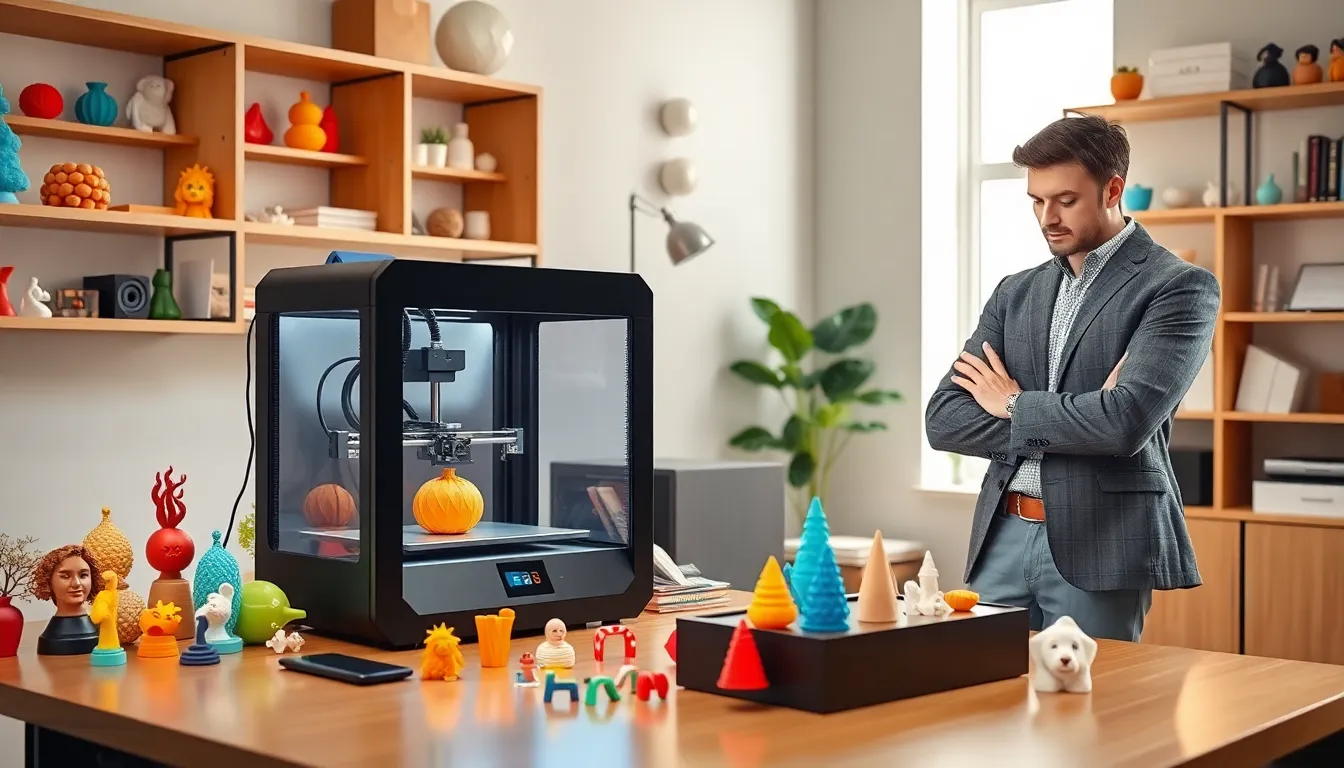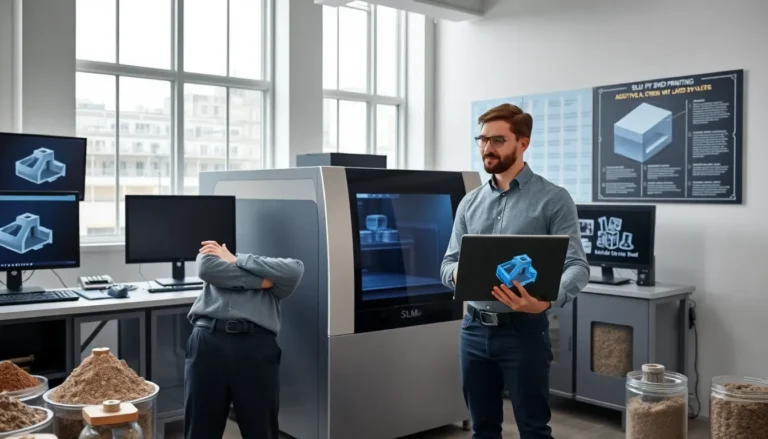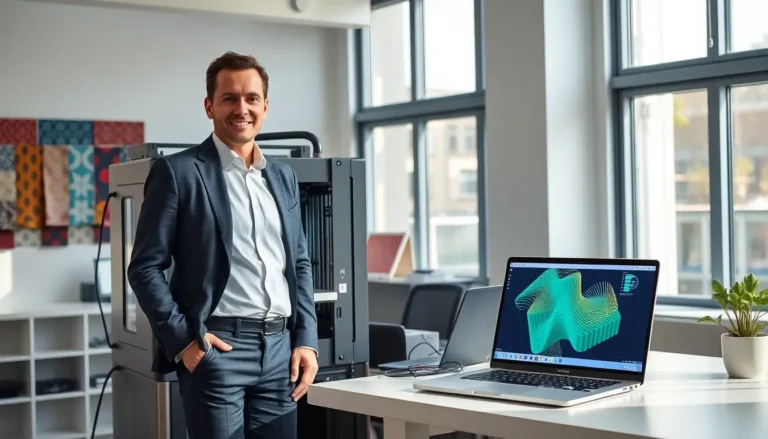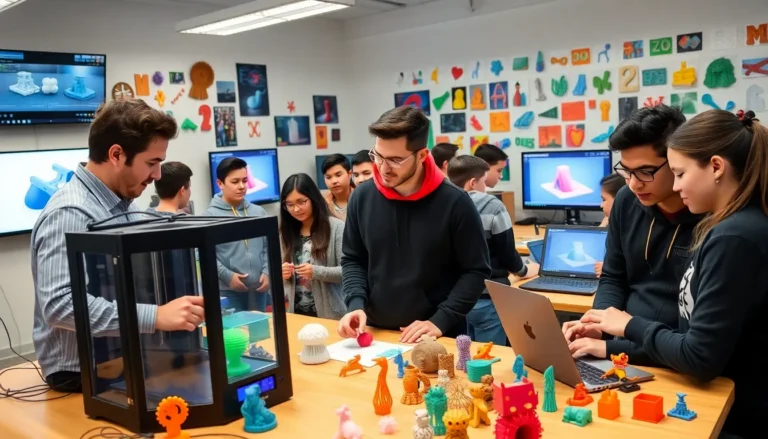Table of Contents
ToggleHave you ever thought about turning that awesome 3D printer into a money-making machine? Picture this: You create something astonishing, like a custom figurine or a unique gadget, and watch it fly off the shelves. It sounds great, right? Well, you’re in luck. This article dives into the world of 3D printing ideas to sell, providing insight into the market and the best projects to catch your eye. Whether you’re a hobbyist or looking to start a business, there are countless ways to tap into your creative side and cash in on your creations. That’s right: let’s transform your passion into profit.
Understanding the 3D Printing Market
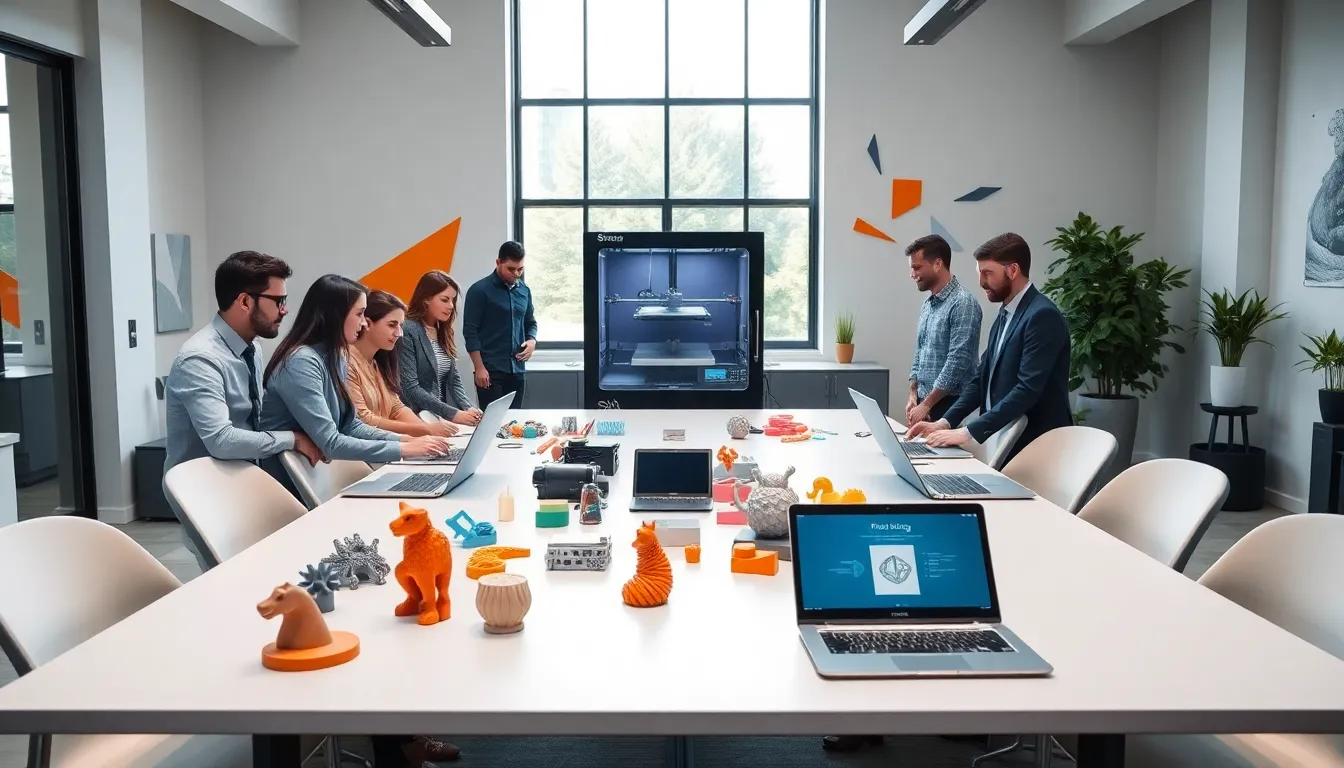
The 3D printing market is booming and for good reason. Statista estimates that the global 3D printing market is expected to grow to over 34 billion dollars by 2024. With technology becoming more accessible, more people are diving into this innovative realm. Enthusiasts and startups alike are starting to recognize the potential for profit in custom items, limited editions, and functional products. By understanding the current market trends, anyone can find the sweet spot that resonates with customers. Emerging niches, like bioprinting and aerospace components, showcase how versatile 3D printing can be. Knowing where your interests align with market demand is crucial when considering what to sell.
Trending 3D Printing Projects
When it comes to 3D printing ideas, staying on top of trends is paramount. Right now, some hot items are:
- Personalized Jewelry: Custom rings, earrings, and necklaces can be designed to suit individual tastes, making them perfect gifts.
- Miniature Figurines: Custom figurines based on users’ photos continue to be a hit. People love showcasing their favorite characters or even their pets.
- Gaming Accessories: From customized dice to unique game pieces, gaming enthusiasts are always on the lookout for unique items to enhance their experience.
- Home Decor: Vases, lampstands, and wall art that can be printed on-demand offer customers a great way to personalize their spaces.
- Educational Tools: 3D printed models can be incredibly useful in classrooms, helping students visualize complex concepts.
Keeping an eye on sites like Thingiverse and social media platforms can inspire new project ideas while ensuring they meet the demands of a busy market.
Unique and Customizable Products
Customization allows creators to build a deeper connection with customers. Unique items often stand out in a sea of mass-produced products. Here are some ideas that might ignite the imagination:
- Custom Phone Cases: Everyone has a phone, and people love to show off their personalities through their accessories. Offering customizable phone cases can attract tech-savvy customers.
- Personalized Nameplates: Creating nameplates for home offices or kid’s rooms can tap into a niche market of both parents and professionals.
- Pet Accessories: Unique items for pets, such as personalized collars or feeding stations, can cater to pet lovers looking for something special for their furry friends.
- Board Games: Modifying existing board games or creating entirely new ones with customized pieces can cater to families or gaming circles. Different themes can appeal to various audiences.
By offering unique, customizable products, entrepreneurs can establish a strong brand presence while meeting their customers’ desires for individuality.
Practical Household Items to Print
Household items always have a stable demand, and 3D printing can truly shine here. Here are some practical items that consumers often appreciate:
- Kitchen Organizers: Items like spice racks, drawer dividers, or utensil holders help declutter any kitchen. Everyone loves an organized cooking space.
- Plant Holders: With the indoor gardening trend on the rise, decorative plant holders can find their way into many homes.
- Storage Solutions: 3D printed storage boxes or drawer dividers offer functionality and style, appealing to those keen on home organization.
- Cable Management Tools: Device users continuously battle tangled cords. Offering solutions, like cable ties or organizers, can be a fantastic selling point.
- Coasters and Mugs: Everyone needs coasters and mugs. Customizable versions make for perfect gifts and practical home essentials.
Creating these items not only satisfies consumer needs but also showcases the versatility of 3D printing.
Considerations for Selling 3D Printed Items
Entering the market may come with challenges, but understanding key considerations can ease the process. First, intellectual property rights must be checked if creating custom designs. Selling replicas of famous items or characters could land sellers in legal hot water. Pricing strategy is equally important: ensure all costs are accounted for without scaring clients off. Also, quality matters, consumers expect durable products, so it’s vital to invest in quality materials and equipment. Prototyping items before mass distribution can validate ideas, saving time and resources. Finally, customer feedback is invaluable. Listening to what customers want helps fine-tune future projects while establishing a loyal clientele.
Marketing Your 3D Printed Products
Marketing strategies play a huge role in getting products noticed. Start with social media platforms like Instagram and Pinterest to showcase your designs visually. Engaging with your audience through posts and stories can help create a community around the brand. Consider leveraging local craft fairs or online marketplaces, like Etsy, for initial sales. Having a strong online presence is essential: creating a website can help collectors and enthusiasts find unique offerings with ease. Running promotions or contests also encourages organic reach as customers spread the word about exciting new products. Partnerships with bloggers or influencers in the crafting space can provide additional exposure and credibility.

